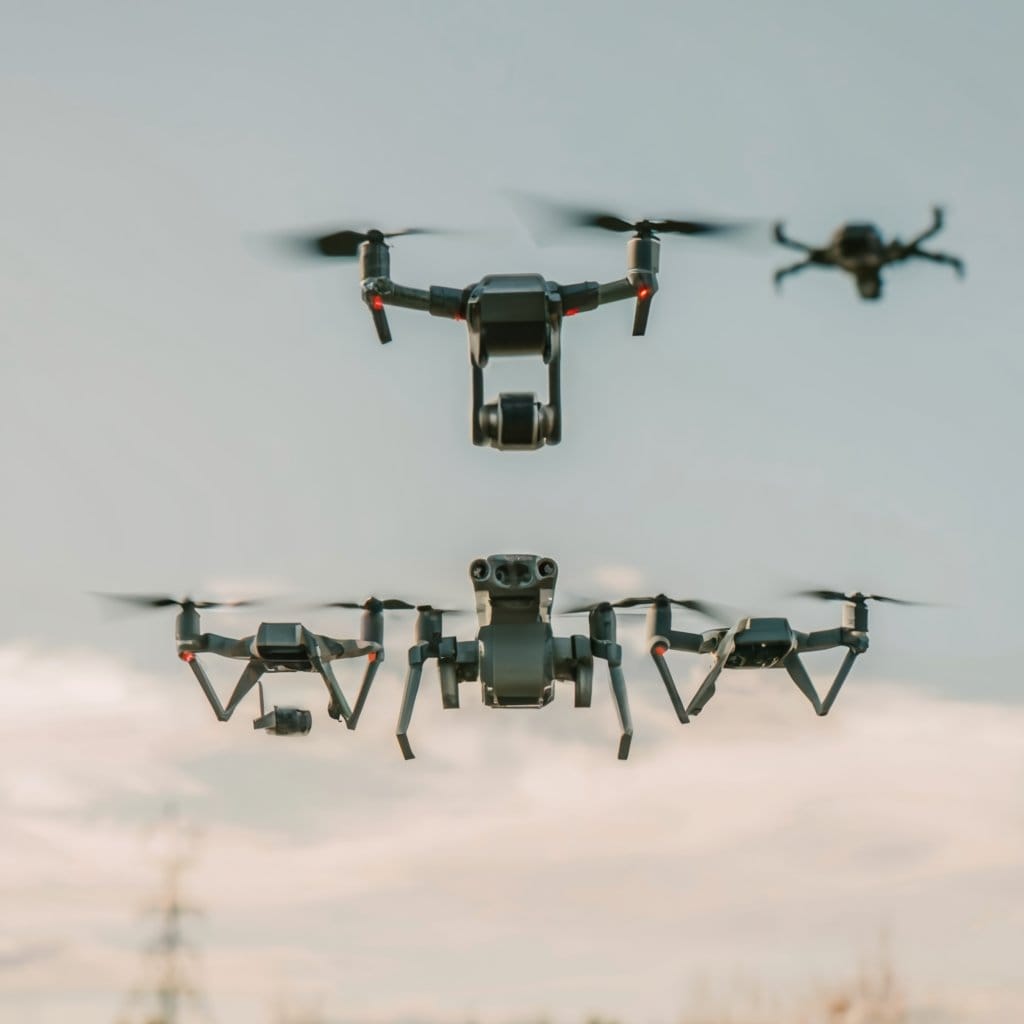Discover the diverse world of drones with an exploration of different types available today. From quadcopters to fixed-wing models, each type offers unique capabilities and applications. Whether you are a hobbyist, a professional photographer, or an agriculture enthusiast, there is a drone designed to meet your specific needs. Understanding the characteristics and features of various drone types can help you make an informed decision when selecting the right one for your intended use. Stay tuned as we delve into the exciting realm of drones and uncover the possibilities that these innovative flying machines bring to various industries.
Key Takeaways
- Actionable Insight: When considering drones, it’s essential to understand the various types based on wing design, size, payload capacity, range classification, power sources, motor types, abilities, and equipment.
- Relevance: Knowing the different types of drones can help you make informed decisions when selecting one for your specific needs or interests.
- Connection to Audience: Whether you’re a hobbyist, a photographer, a videographer, or someone interested in technology, understanding drone types can enhance your drone-related activities.
- Link to Content: Refer back to the detailed explanations provided in the article regarding wing designs, size categories, payload capacities, range classifications, power sources, motor types, and drone abilities and equipment.
- Enhanced Decision-Making: Armed with knowledge about the types of drones, you can choose the most suitable one based on your intended use, whether it’s for photography, videography, recreational flying, or other purposes.
- Optimizing Performance: Matching the right drone type to your requirements can lead to better performance outcomes in terms of flight capabilities, payload handling, range, and overall user experience.
Understanding Drones
What is a drone
Drones, also known as unmanned aerial vehicles (UAVs), are aircraft operated without a human pilot on board. They can be controlled remotely or fly autonomously through pre-programmed flight plans. The basic components of a drone include the frame, motors, propellers, electronic speed controllers, flight controller, and power source. These components work together to enable the drone to fly and perform various tasks efficiently.
Drones have evolved significantly over the years. Initially, they were primarily used for military purposes such as surveillance and reconnaissance missions. However, with advancements in technology, drones are now widely used in commercial, recreational, and humanitarian applications. The evolution of drones has led to the development of more sophisticated models with enhanced capabilities and features

Drone uses
- Diverse drone applications:
- Agriculture: Drones are used for crop monitoring, spraying pesticides, and assessing plant health.
- Photography and videography: Drones capture stunning aerial footage for films, real estate listings, and events.
- Search and rescue operations: Drones aid in locating missing persons or delivering supplies in disaster-stricken areas.
- Impact of drones on various industries:
- Construction: Drones assist in surveying construction sites, monitoring progress, and ensuring safety compliance.
- Healthcare: Drones transport medical supplies quickly to remote locations or deliver defibrillators during emergencies.
- Environmental conservation: Drones help monitor wildlife populations, track deforestation, and assess environmental changes.
- Future potential of drone technology:
- Delivery services: Companies like Amazon are exploring drone delivery options to expedite package shipping.
- Urban transportation: Conceptualized air taxis could revolutionize urban mobility by offering aerial commuting solutions.
- Surveillance and security: Law enforcement agencies are considering using drones for enhanced surveillance capabilities in public spaces.
Drones continue to revolutionize various industries by providing cost-effective solutions that enhance efficiency and safety. Their versatility and adaptability make them invaluable tools for tasks ranging from entertainment to disaster response. As technology advances further, the potential applications of drones are expected to expand even more, shaping the future of industries worldwide.
Types by Wing Design
Fixed-wing drones
Fixed-wing drones differ from other types like multirotor drones in their design, resembling traditional airplanes. They are more efficient in covering large distances due to their aerodynamic structure. These drones are known for their longer flight times and higher speeds compared to multirotor drones.
Unique features of fixed-wing drones include their ability to stay airborne for extended periods, making them ideal for tasks requiring long-range flights. They are equipped with larger payloads, enabling them to carry heavier equipment or sensors. Their design allows for stable and smooth flights, especially in windy conditions.

Ideal use cases for fixed-wing drones include aerial mapping, surveying vast areas of land, and agricultural applications such as crop monitoring. These drones are popular in industries that require extensive coverage over large terrains due to their efficiency in long-distance flights.
Single-rotor helicopters
Single-rotor helicopters offer advantages such as greater lifting capacity and higher speeds than multirotor drones. Their design provides better stability during flight, allowing for precise maneuvering and control. However, operating single-rotor helicopters can be challenging due to their complex mechanics and maintenance requirements.
Challenges of operating single-rotor helicopters include the need for skilled pilots and regular maintenance checks to ensure safe operation. These drones are more susceptible to wind disturbances, requiring experienced pilots to navigate effectively in varying weather conditions.
Specific applications of single-rotor helicopters include aerial photography, search and rescue missions, and filming in dynamic environments. Their ability to hover steadily makes them suitable for tasks that demand precise positioning or capturing detailed images from unique angles.
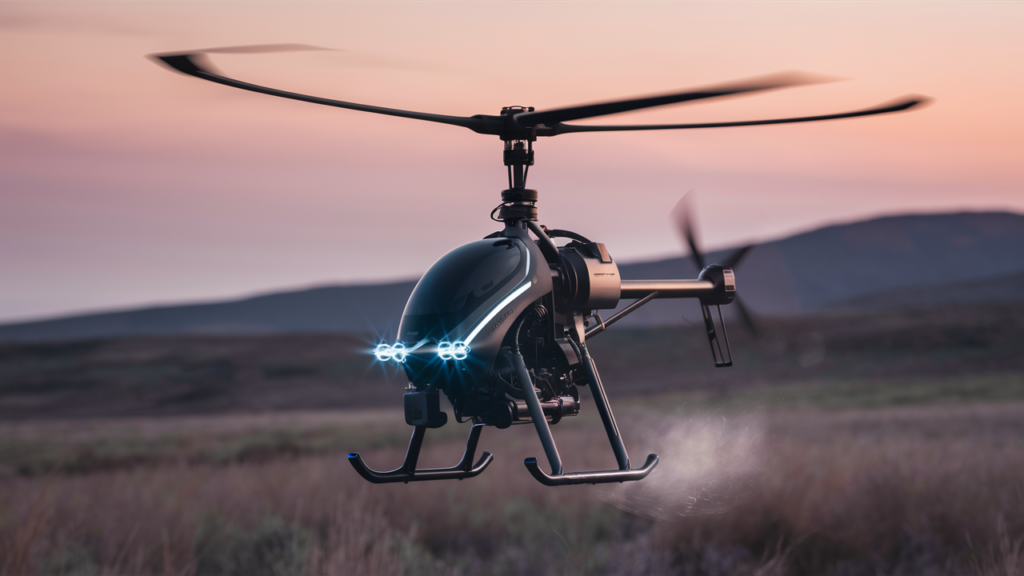
Hybrid VTOL
Hybrid VTOL drones combine the vertical take-off and landing capabilities of multirotor drones with the efficiency of fixed-wing designs. They offer the flexibility to take off vertically like a helicopter and transition into forward flight mode for increased speed and endurance. Compared to traditional drone types, hybrid VTOL drones provide a balance between versatility and efficiency.
Benefits of hybrid VTOL drones include their ability to access confined spaces for take-off and landing while still covering long distances efficiently. They can perform tasks that require both hovering capabilities and extended range operations, making them versatile for various applications.
The versatility of hybrid VTOL drones allows them to be used in scenarios such as infrastructure inspection, emergency response missions, and surveillance operations where flexibility in flight modes is essential.
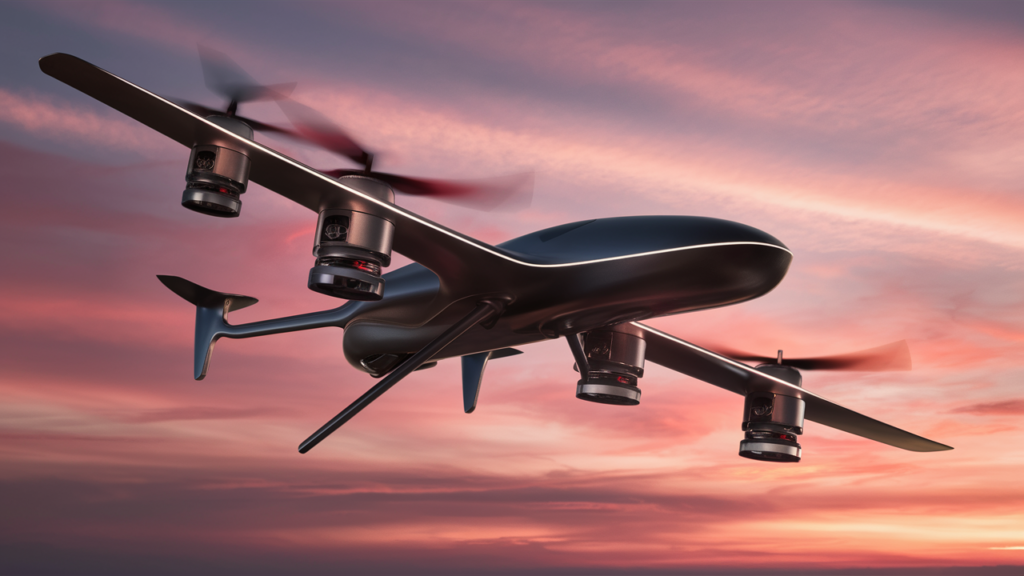
Size Categories
Nano Drones
Nano drones are the smallest category of drones, typically weighing less than 250 grams. These drones are compact and lightweight, making them highly maneuverable.
Their small size allows nano drones to access tight spaces that larger drones cannot reach. They excel in surveillance missions and are ideal for indoor navigation due to their agility.
The advantages of using nano drones include their discreet nature, making them suitable for covert operations. Their compact size enhances their portability and ease of deployment.
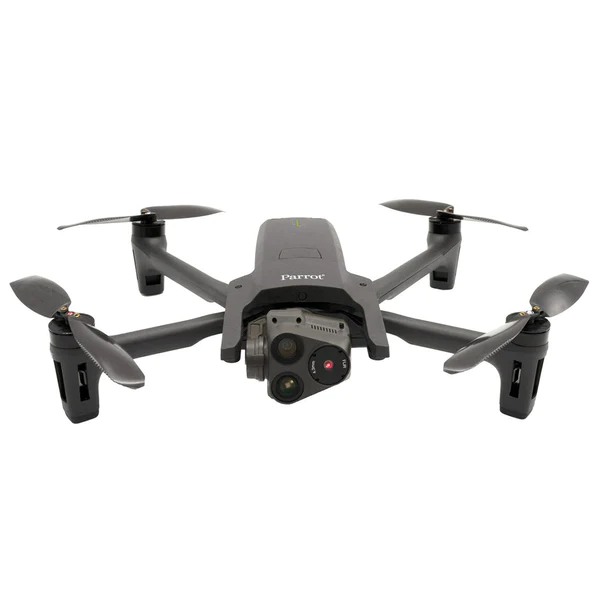
Small Drones
Small drones are slightly larger than nano drones, usually weighing between 250 grams and 2 kilograms. Unlike nano drones, they offer increased stability and longer flight times.
In comparison to nano drones, small drones have better camera quality and payload capacity. They are commonly used in agriculture for crop monitoring and in filmmaking for aerial cinematography.
Small drones are versatile tools across various industries due to their portability and cost-effectiveness. They can be easily transported to different locations for diverse applications.
Example are: DJI Mavic Air 2 and Parrot Anafi
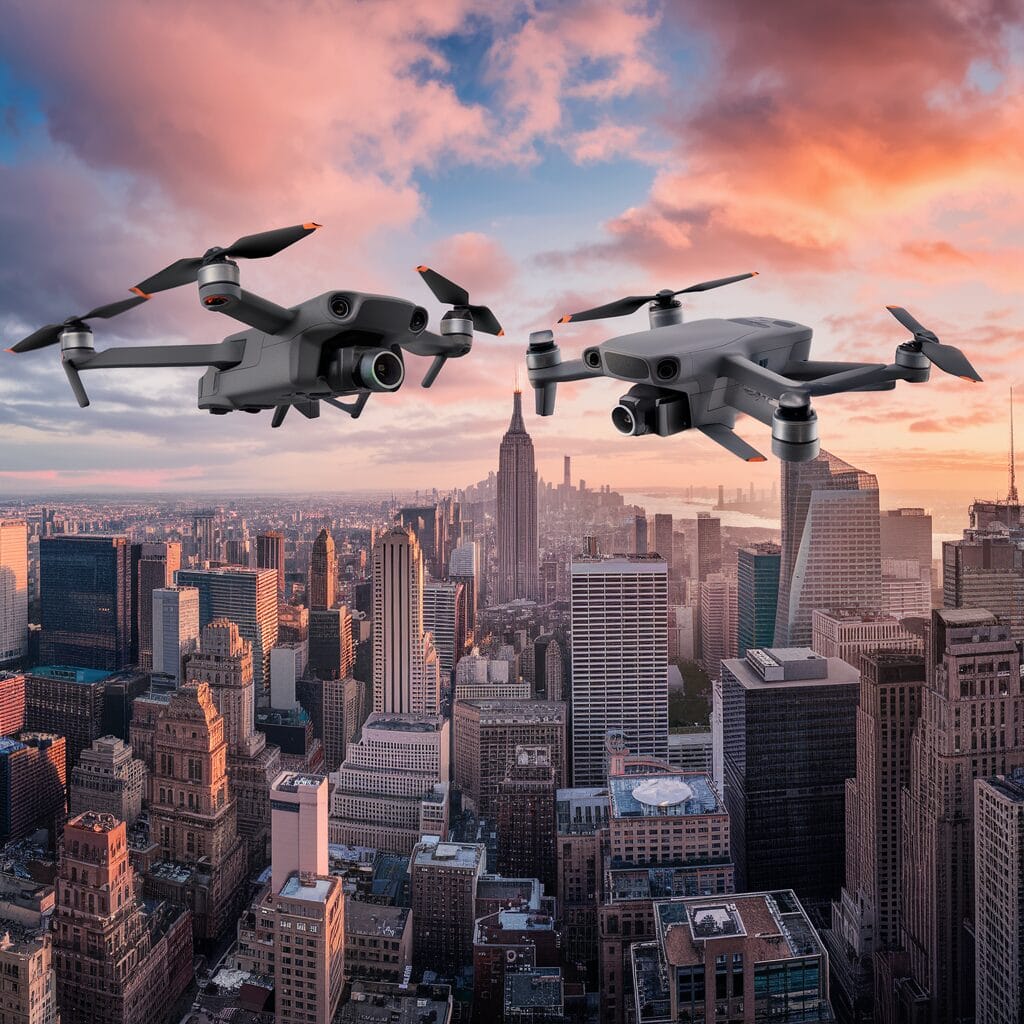
Medium Drones
Medium drones fall between small and large drones in terms of size and capabilities. Weighing between 2 kilograms and 25 kilograms, they offer a balance of endurance and payload capacity.
Compared to small drones, medium drones have longer flight times and can carry heavier payloads. They are often used in search and rescue missions, aerial mapping, and infrastructure inspection.
Medium drones feature advanced technologies such as obstacle avoidance systems and high-resolution cameras for enhanced performance in complex environments.
Following are some good exmples of Medium Drones: DJI Matrice 200 Series, Yuneec H520 and DJI Matrice 300 RTK
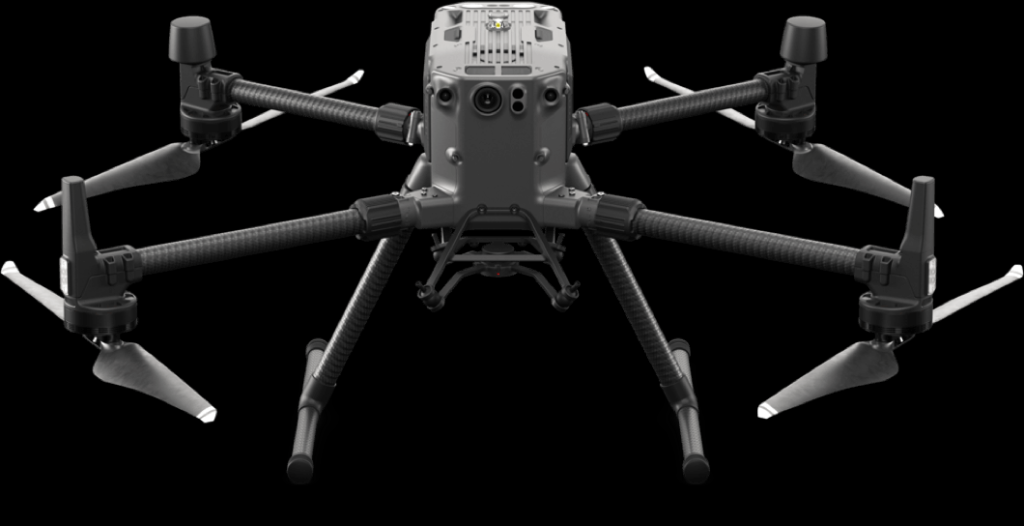
Large Drones
Large drones are the heaviest category of drones, typically weighing over 25 kilograms. These drones have extensive endurance capabilities and can carry substantial payloads.
Large drones stand out for their long-range communication systems and sophisticated sensors for enhanced surveillance missions. In military applications, they play crucial roles in reconnaissance and combat operations.
The significance of large drones in military applications lies in their ability to cover vast areas for intelligence gathering while minimizing human risk on the battlefield.
MQ 9 Reaper and DJI Agras T30 are good examples of large Types of Drones
Payload Capacity
Featherweight Drones
Featherweight drones, known for their minimal payload capacity, are typically used for recreational purposes due to their lightweight build. These drones excel in agility and are perfect for beginners honing their piloting skills.
The advantages of featherweight drones lie in their portability and ease of use. Their small size allows for indoor flying, making them suitable for capturing footage in confined spaces. However, the limited payload capacity restricts their ability to carry additional accessories or equipment.
Lightweight Drones
Lightweight drones boast a slightly higher payload capacity compared to featherweight models. These drones are favored for tasks requiring short-range flights such as aerial photography and surveillance missions. Their maneuverability makes them ideal for capturing dynamic shots with precision.
Specific applications of lightweight drones include mapping, agricultural monitoring, and search-and-rescue operations. Their ability to navigate through tight spaces and varying terrains enhances their utility in diverse scenarios. The compact design of lightweight drones contributes to their swift movements during flight.
Middleweight Drones
Middleweight drones strike a balance between lighter and heavier counterparts, offering a moderate payload capacity suitable for various commercial applications. Compared to featherweight and lightweight models, middleweight drones can carry more advanced camera systems or sensors.
The versatility of middleweight drones is evident in industries like construction, infrastructure inspection, and environmental monitoring. Their ability to accommodate specialized payloads enables them to collect detailed data efficiently. Middleweight drones excel in tasks that require a blend of endurance and maneuverability.
Heavy Lift Drones
Heavy lift drones are designed with substantial payload capacities, capable of carrying heavy equipment such as professional cameras or industrial sensors. Industries such as film production, agriculture, and disaster relief benefit from the lifting capabilities of these drones.
Operating heavy lift drones presents challenges related to battery life and flight stability due to the added weight. Despite these obstacles, advancements in drone technology have enhanced the reliability of heavy lift models, expanding their potential applications.
Range Classification
Close-range drones
Close-range drones are typically used within a short distance from the operator, usually up to 500 meters. These drones are perfect for tasks like surveillance and inspection due to their maneuverability.
- Close-range drones offer real-time monitoring capabilities, making them ideal for search and rescue operations.
- Despite their advantages, close-range drones are limited by their short battery life, restricting their operational time.
Short-range drones
Short-range drones have a slightly longer operational range compared to close-range drones, typically covering distances of up to 5 kilometers. These drones find applications in various industries such as agriculture, construction, and photography.
- Short-range drones play a crucial role in tasks like crop monitoring in agriculture and site surveying in construction.
- The operational range of short-range drones allows them to efficiently cover small to medium-sized areas with precision.
Mid-range drones
Mid-range drones bridge the gap between short and long-range categories, offering an operational range of up to 50 kilometers. These drones provide extended flight times and improved stability during flights.
- Compared to close and short-range drones, mid-range drones can cover larger areas effectively for tasks like mapping and wildlife conservation.
- Their enhanced flight capabilities make mid-range drones suitable for long-duration surveillance missions.
Long-range drones
Long-range drones are designed for missions that require coverage over significant distances, reaching ranges beyond 50 kilometers. These advanced drones feature high-quality cameras, extended battery life, and robust communication systems.
- Long-range drones excel in applications like border patrol, pipeline inspections, and disaster response, where extensive coverage is essential.
- While long-range drones offer unparalleled reach, they face challenges such as regulatory restrictions on flying beyond visual line of sight (BVLOS).
Power Sources
Battery powered
Battery-powered drones offer portability and ease of use, making them popular for hobbyists and professionals alike. These drones are known for their quick setup and immediate deployment capabilities. The lightweight nature of batteries contributes to the overall agility of the drone, allowing for swift maneuvers during flights.
- Advantages:
- Portability and ease of use
- Quick setup and immediate deployment
- Lightweight nature enhancing agility
Battery-powered drones have a limited flight time compared to other power sources like gasoline or hydrogen fuel cells. However, advancements in battery technology have led to longer flight times and improved performance. Manufacturers are constantly working on developing higher capacity batteries to extend the range of these drones further.
Gasoline powered
Gasoline-powered drones are favored for their long endurance and ability to carry heavier payloads, making them suitable for applications such as aerial photography, surveying, and agriculture. These drones can stay airborne for extended periods, covering large distances without frequent refueling.
- Advantages:
- Long endurance and heavy payload capacity
- Ideal for aerial photography, surveying, and agriculture
- Extended flight times without frequent refueling
Gasoline-powered drones excel in scenarios where long flight times are crucial, such as search-and-rescue missions or monitoring vast areas. Their robust engines provide reliability in challenging environments and adverse weather conditions, ensuring consistent performance.
Hydrogen fuel
Drones powered by hydrogen fuel offer longer flight times than traditional battery-operated drones while producing zero emissions. The use of hydrogen fuel cells reduces the environmental impact of drone operations by minimizing carbon emissions during flights.
- Benefits:
- Longer flight times with zero emissions
- Reduced environmental impact
- Enhanced sustainability in drone operations
Compared to battery-powered drones that require recharging after a limited time, hydrogen fuel cells enable continuous operation over extended periods. Despite the advantages, the infrastructure required for storing and refueling hydrogen poses challenges for widespread adoption.
Solar energy
ar-powered drones harness renewable energy from the sun to achieve prolonged flight times without the need for frequent recharging. These drones are environmentally friendly and offer sustainable solutions for various applications such as surveillance, monitoring, and communication relay.
- Advantages:
- Harnesses renewable energy for prolonged flight times
- Environmentally friendly with sustainable solutions
- Suitable for surveillance, monitoring, and communication relay missions
Challenges such as limited power generation during cloudy days or at night restrict the continuous operation of solar-powered drones. However, ongoing research aims to enhance solar panel efficiency and storage capacity to overcome these limitations.
Drone Abilities and Equipment
Toy and Hobby
Toy and hobby drones are widely used for recreational purposes, offering affordable options for enthusiasts. These drones cater to beginners and hobbyists looking for fun flying experiences. The popularity of drone racing has surged within the hobbyist community, providing an adrenaline-filled competitive platform. Like Dji Tello

Photo and Video
Drones play a crucial role in modern photography and videography, enabling unique aerial perspectives. Their specific features, such as high-resolution cameras and stabilizing gimbals, enhance image and video quality. In cinematography, drones are valued for their ability to capture dynamic shots from various angles.
Racing Drones
Racing drones attract enthusiasts with their competitive nature, fostering thrilling races and events. These drones boast impressive speed capabilities, reaching high velocities during races. The technology behind racing drone design focuses on aerodynamics, lightweight materials, and powerful motors for optimal performance. Like EMAX Tinyhawk II

GPS Enabled
GPS technology revolutionizes drone operations by ensuring precise navigation and location tracking. GPS-enabled drones offer numerous benefits, including accurate flight paths, automated return-to-home functions, and geofencing capabilities. The accuracy of GPS navigation enhances safety and efficiency in drone missions.
Motor Types
Brushed motors
Brushed motors, one of the main types used in drones, are known for their simplicity and affordability. However, they are less efficient compared to brushless motors. The maintenance requirements for brushed motors are higher due to the brushes wearing out over time.
In comparison to other motor types, brushed motors are less efficient in converting electrical energy into mechanical power. This inefficiency leads to lower overall drone performance and shorter flight times. Brushed motors require regular maintenance to replace worn-out brushes, making them more high-maintenance than other motor types.
Brushless motors
Brushless motors, a more advanced type compared to brushed motors, offer superior performance and efficiency in drone propulsion. They are known for their durability and longer lifespan compared to brushed motors. Brushless motors have gained popularity due to their enhanced performance capabilities.
When comparing brushless motors with brushed counterparts, brushless motors stand out for their improved efficiency and performance. The absence of brushes in brushless motors results in less friction and wear, leading to a longer lifespan and reduced maintenance needs. The advantages of brushless motors include higher power output, increased reliability, and smoother operation during flights.
In terms of durability, brushless motors outshine brushed ones due to their design without brushes that can wear out over time. This design feature contributes significantly to the longevity of brushless motors, making them a preferred choice for drone enthusiasts looking for reliable and long-lasting propulsion systems.
Closing Thoughts
The detailed exploration of various types of drones, from wing designs to payload capacities, has shed light on the diverse capabilities these unmanned aerial vehicles possess. Understanding the nuances of size categories, range classifications, power sources, drone abilities, equipment, and motor types is crucial for enthusiasts and professionals alike. By delving into these intricacies, one can appreciate the complexity and versatility that drones offer across different industries and applications.
As technology continues to advance rapidly, staying informed about the latest developments in drone technology is essential. Whether for recreational use, commercial operations, or research purposes, keeping abreast of the evolving landscape of drones can provide valuable insights and opportunities. Embracing this knowledge can lead to enhanced decision-making and a deeper appreciation for the impact drones have on our world.


